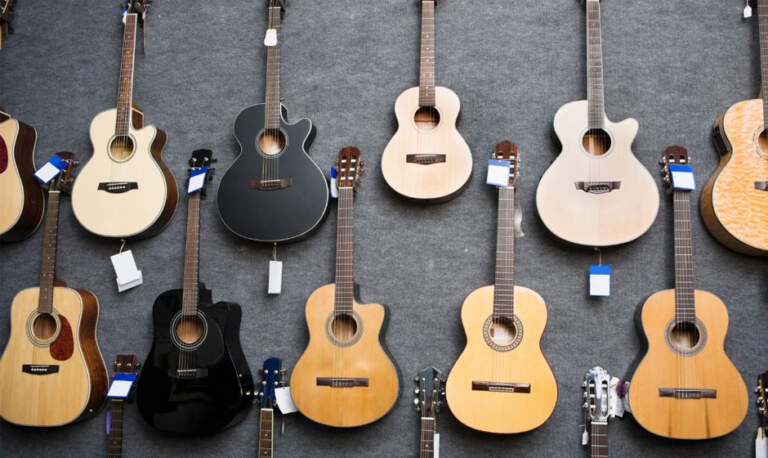The latest innovative technologies have started to transform industries, revolutionizing everything from workflow operations and supply chains to customer service and product quality. Everywhere you look, businesses are adopting new tools that utilize artificial intelligence (AI) to optimize and develop more sustainable practices — and the fashion industry is no exception.
Today’s consumers are demanding more from the brands they shop from. The fashion industry has historically significantly contributed to carbon emissions and waste, but customers today want sustainable and ethical fashion.
While building a more sustainable brand takes time, the advent of AI technologies has made it easier to go green and will transform the future of fashion.
The Detrimental Impacts of Fast Fashion
Fast fashion is a relatively new concept that was introduced in the 1990s. Brands began introducing poorly made and cheaply priced clothing to increase sales while keeping up with rapidly changing fashion trends.
Unfortunately, while this is great from a sales standpoint, it’s horrendous for the environment. Clothing companies have been able to keep this hidden for some time, but the truth about fast fashion and how the industry damages the environment has now been uncovered.
Clothes are worn and discarded at higher rates because of poor quality, which means thousands of garments end up in landfills. The design and manufacturing of these clothes create wastewater filled with toxic chemicals. Plastic fibers from cheaply-made clothing are polluting the ocean. And the materials needed to create accessories are often sourced unethically.
To top it all off, there is a big problem with the exploitation of underpaid workers in the fast fashion industry. Due to high demand and rapid output of clothing in such large quantities, several fast fashion factories force their workers to work in poor conditions while getting paid low wages.
How AI Is Revolutionizing the Fashion Industry
The applications of AI are vast. Though AI is relatively new, it has created numerous opportunities for fashion brands to make improvements that can revolutionize the fast fashion industry and increase sustainability.
1. Reducing Waste
Perhaps one of the most exciting technologies being used today in the fashion industry is predictive analytics powered by AI, which enables brands to predict future fashion trends. As mentioned above, one of the reasons fast fashion emerged was because of rapidly changing trends. However, with predictive analytics, companies will have more time to prepare for changing trends, which can help slow manufacturing in a good way, meaning less waste and pollution.
2. Increasing Customer Satisfaction and Decreasing Over Purchasing
One of the issues with fast fashion is that these companies simply produce large quantities of poorly made clothing, hoping that some of what they produce will hit the target and sell. With AI and analytics, however, brands can more carefully analyze customer data, helping them better understand customer preferences.
So instead of creating a bunch of clothing and hoping something in that mix pleases the customer, brands can now focus on only creating the clothes that they now know are more likely to sell thanks to AI-powered data tools. This also enables brands to create better customer experiences, which can help reduce overpurchasing and return rates.
3. Making Products Faster and More Efficient
Traditionally, before a design hits the shelves, it goes through many different changes until the brand is satisfied with the final product. This can sometimes require several different samples or versions of the design to be made, which is inefficient. Brands can use 3D modeling tools to create digital versions of the design first before they create the physical product, which can reduce time, effort, and material waste.
4. Creating More Sustainable Supply Chains
Another way AI comes into play is by automating fashion supply chain processes. When large quantities of clothing are manufactured, there is a wide range of processes involved in getting the product from the design stage to the customer’s doorstep or on the shelves. With AI, many of these processes or tasks can be automated, which can alleviate the burdens placed on workers and make the supply chain more efficient overall, which can help cut back on energy and resources.
5. Making Fashion Functional and Safe
AI and other innovative technologies can also help brands create smarter, more innovative clothing and accessories. As the digital landscape continues to become a major part of our society, this will affect the kinds of clothing people want to wear.
Consumers are interested in how fashion can also go digital while retaining style and comfort. For example, we are starting to see more clothing with features like lights or digital displays woven in with the fabric. There is also smart clothing, which are items made using engineered textiles and embedded sensors.
Accessories are also getting an upgrade, such as smart sunglasses and smart wallets. This makes fashion more futuristic and safer. Smart wallets, for example, can help protect wearers from having the data in their RFID-chipped credit cards compromised.
6. Powering Fashion Sustainably
Like many industries, fashion largely relies on fossil fuels and other nonrenewable energy sources to power production. AI makes energy cheaper by reducing waste, while new advanced materials are making renewable sources — especially solar — more efficient. These innovations in green energy may allow fashion to extricate itself from the confines of nonrenewable, destructive, and pollutive energy.
Investing in AI is an Investment in a Greener Future
As consumers increasingly demand more from brands in terms of ethics and sustainability, it will be crucial for businesses to start investing more in artificial intelligence. Brands can assess the market potential of different AI-driven software components as well as the different risks before making their decision.
While this might require significant changes that can cost a lot of money upfront, the transformative potential that comes with adopting AI technologies means that it will lead to a significant ROI in the long run. For instance, AI could be used to help consumers try on products virtually by creating virtual avatars.
The growth potential of AI is outstanding. AI in the retail industry alone is expected to reach $17,086 million by 2028. As a whole, the global AI revenue is predicted to reach close to $900 billion by 2026.
While investing in a new technology like AI can come with risks, it is worth it for the competitive advantage it can give fashion companies, in addition to helping them build a more sustainable business with less environmental impact.
With AI and other innovative technologies, fashion brands can transform how they do business, increasing customer satisfaction, improving sales, driving growth, and reducing environmental impact.











